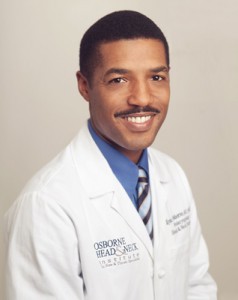- India Medical Mission 2018 - November 1, 2018
- Sleep Disorders: Sleep Apnea and Upper Stimulation Therapy - August 25, 2015
- The Naked Vocalist Podcast Featuring Dr. Reena Gupta - May 27, 2015
- New Therapy for Sleep Apnea – First Sleep Pacemaker placed in California at Osborne Head and Neck Institute. - December 12, 2014
- Boxer’s Ear: Can your ear explode? - December 12, 2014
- Nose Picking (Rhinotillexis) and Septal Perforations: Why I should stop picking my nose…? - November 24, 2014
- Deviated Septum and Septal Perforation - July 28, 2014
- Hereditary Hemorrhagic Telangiectasia: Nasal Septal Perforation Repair - June 25, 2014
- Dr. Mantle recognized at the Beverly Hills Medical Science Academy Awards - May 8, 2014
- Commonly Misdiagnosed Pathologies: Arteriovenous Malformations - April 9, 2014
Dr. Ryan Osborne, Director of Head & Neck Surgery and Salivary Gland Disorders, at the Osborne Head & Neck Institute, specializes in the non-surgical removal of salivary gland stones causing swelling and infection of the major salivary glands.

This is accomplished through a minimally invasive outpatient endoscopic procedure called sialendoscopy that requires no surgical incisions, leaves no scars, and carries a zero percent risk of facial nerve paralysis. He is one of a hand full of surgeons in the world that have championed the use sialendoscopy for the safe removal of salivary gland stones, avoiding invasive surgical procedures that are quickly becoming seen as archaic and obsolete by this new technique.
Dr. Ryan Osborne is currently performing 15-20 outpatient procedures per week on patients from across the globe saving many patients from unnecessary invasive surgeries, hospitalizations, and facial nerve paralysis. If you are interested in treatment for salivary gland stones and do not want to have surgery to remove your entire salivary gland or are concerned about facial paralysis associated with traditional surgical techniques please see the basic information below about salivary gland stone treatment and fill out the contact form to schedule a call back from our office. Most patients fly into Los Angeles, have their procedure and fly out the next day. Remember it is no longer necessary to remove your entire salivary gland if the stones are removed in a timely fashion. Contact us now.
Treatment at the Osborne Head & Neck Institute
Sialendoscopy Procedure:
Salivary gland remains intact and functional
- No facial or neck incisions
- No scars
- No facial nerve paralysis
Traditional Surgery:
Entire salivary gland is surgical removed
- Facial or neck incision required
- Risk of scars
- Risk of facial nerve paralysis
Animated video of Sialendoscopy Procedure:
|
|
|
|
Contact us now, at http://www.parotid.net






